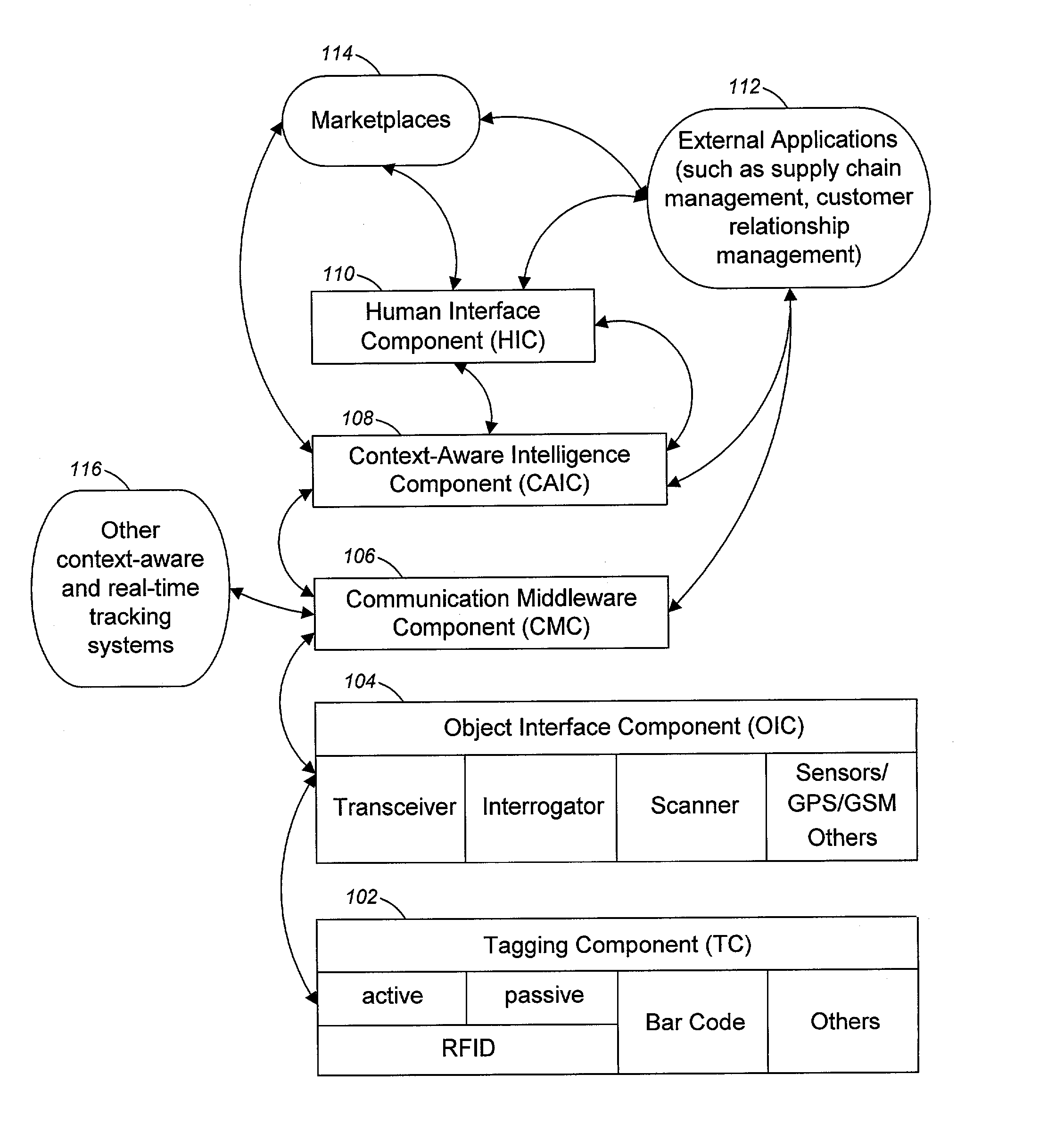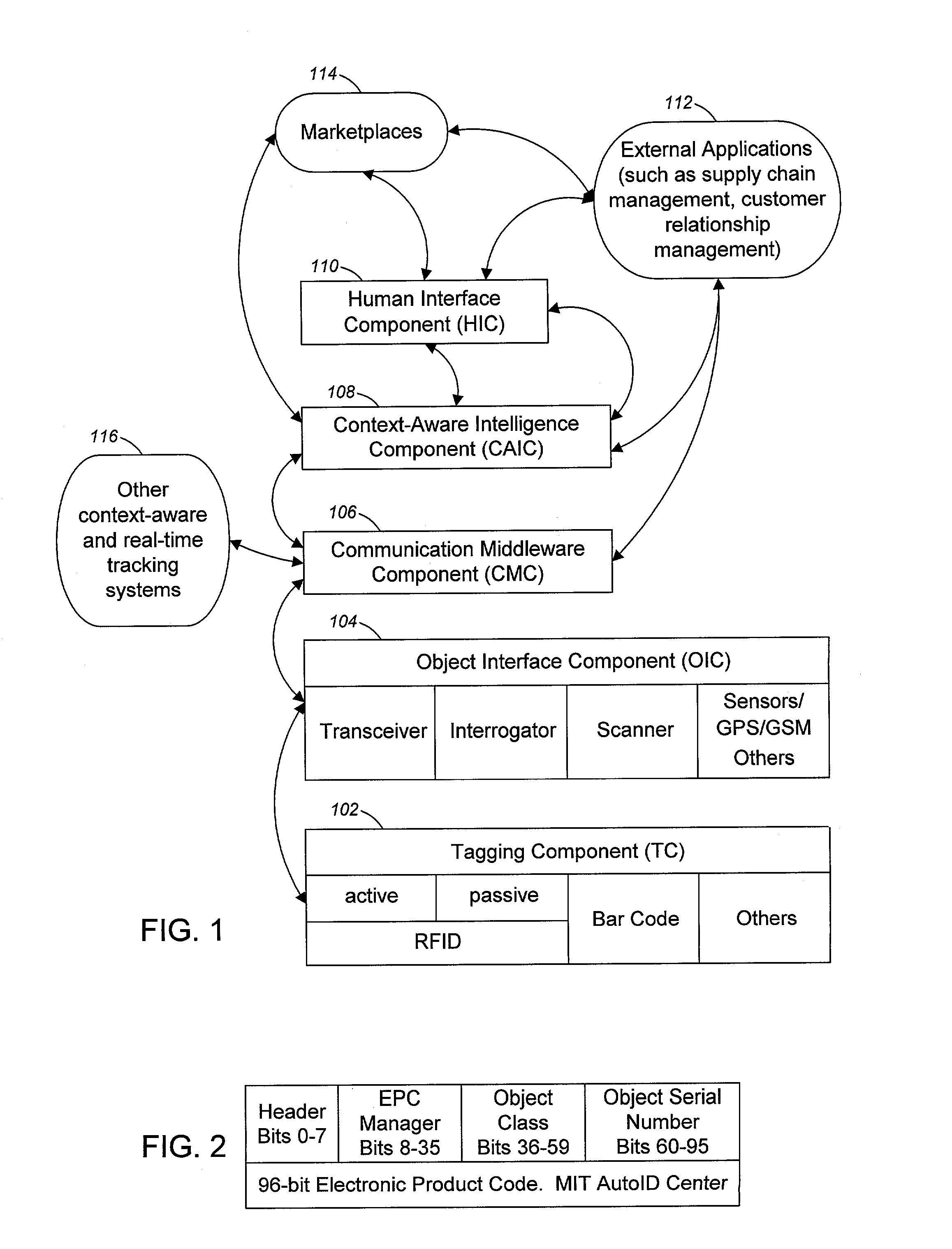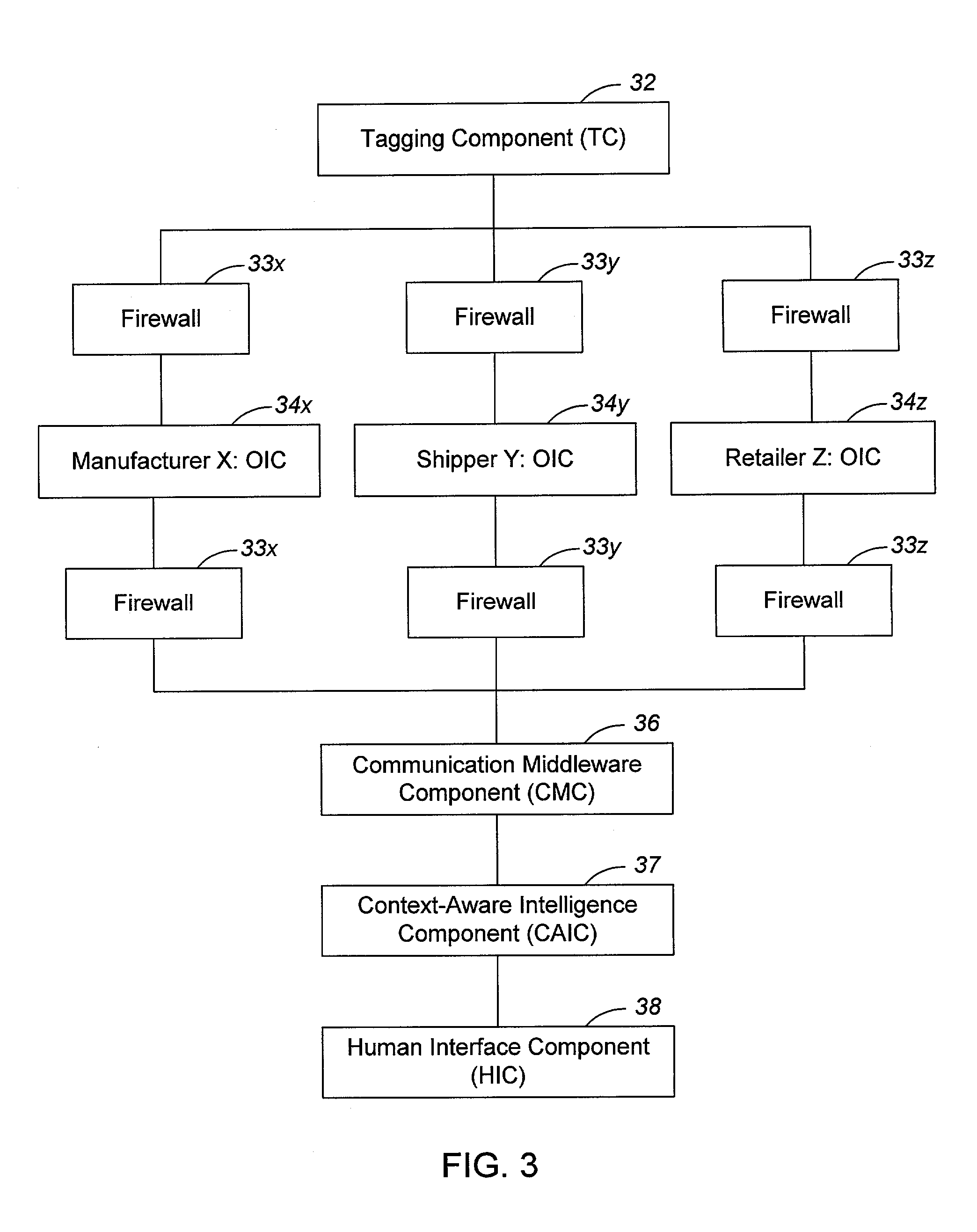Bi-directional data flow in a real time tracking system
a real-time tracking and data flow technology, applied in the field of bi-directional data flow in a real-time tracking system, can solve the problems of easy discrepancy between the actual status of the object, the scope and resolution of most conventional systems are limited, and the conventional system can have a distorted and fragmented picture of reality. , to achieve the effect of convenient work
- Summary
- Abstract
- Description
- Claims
- Application Information
AI Technical Summary
Benefits of technology
Problems solved by technology
Method used
Image
Examples
Embodiment Construction
[0035]A System for Real-time and Context-Aware Tracking
[0036]A system in accordance with the invention receives information in an open, non-proprietary form, concerning articles and circumstances affecting articles. This information becomes physical objects and context objects, and their attributes, in the system.
[0037]In this specification, the term ‘physical object’ will be used to refer to data that corresponds to and is used as a representation of any article. In any particular implementation, a physical object can be implemented as an object in the object-oriented programming sense of the term; however, it can also be implemented in any other convenient way, for example, by a record in a database. Similarly, the term ‘context object’ will be used to refer to data that corresponds to and is used as a representation of tangible and intangible things, including, by way of example, relationships and events. Physical and context objects may also be referred to as virtual articles an...
PUM
 Login to View More
Login to View More Abstract
Description
Claims
Application Information
 Login to View More
Login to View More - R&D
- Intellectual Property
- Life Sciences
- Materials
- Tech Scout
- Unparalleled Data Quality
- Higher Quality Content
- 60% Fewer Hallucinations
Browse by: Latest US Patents, China's latest patents, Technical Efficacy Thesaurus, Application Domain, Technology Topic, Popular Technical Reports.
© 2025 PatSnap. All rights reserved.Legal|Privacy policy|Modern Slavery Act Transparency Statement|Sitemap|About US| Contact US: help@patsnap.com



